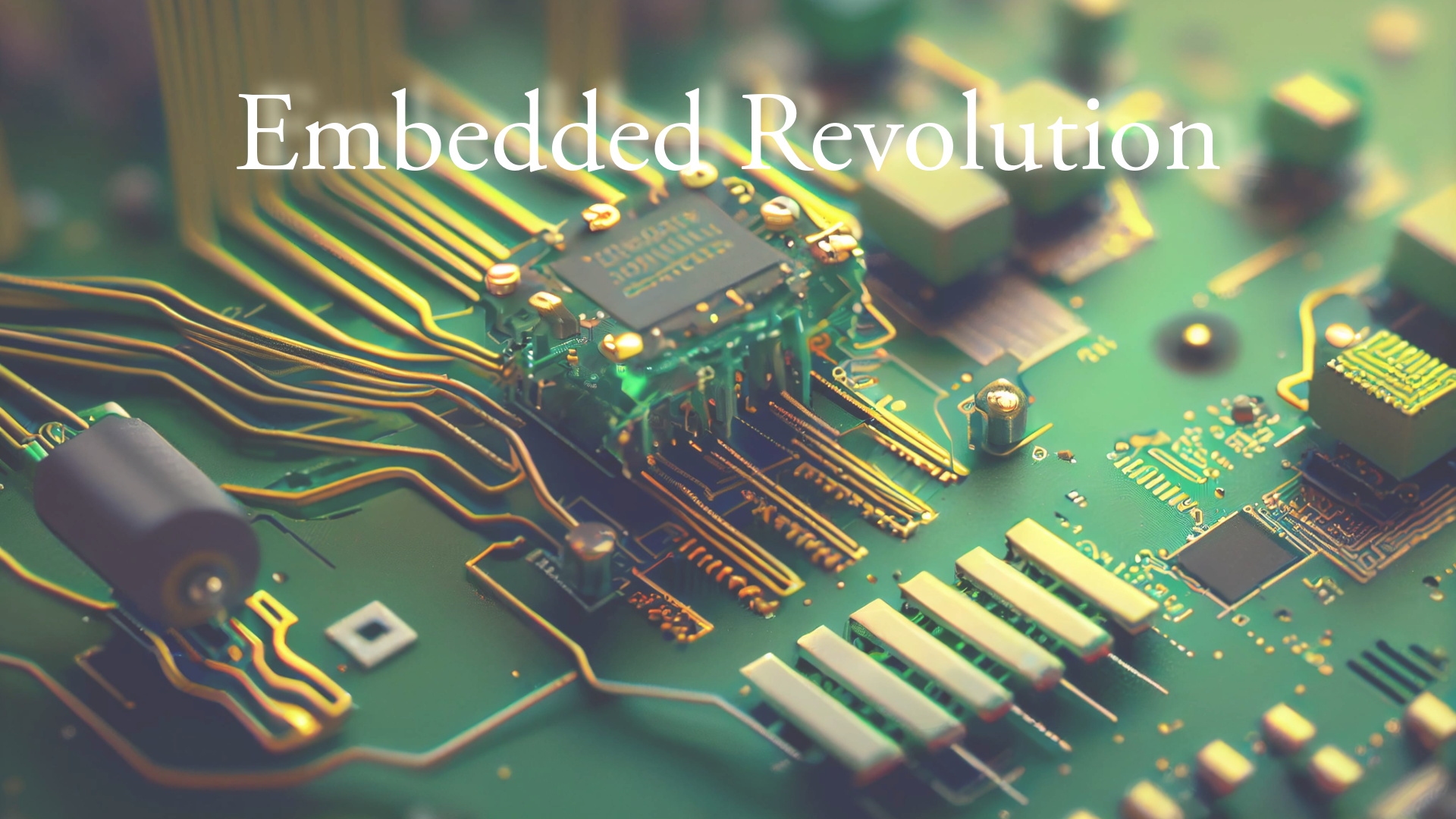Embedded Revolution: How Tiny Chips Are Changing The World

Introduction to Embedded Systems
By defining what embedded systems are – small computing devices embedded into larger systems to perform specific functions. Examples include microcontrollers in appliances, sensors in industrial machinery, and processors in cars. Tiny chips, also known as microchips or integrated circuits, have indeed been transformative in various aspects of our lives, revolutionizing technology and society in numerous ways.
How tiny chips are changing the world
- Computing Power: One of the most obvious areas where tiny chips have made a significant impact is in computing power. Moore’s Law, which predicts the doubling of transistors on a microchip approximately every two years, has held true for several decades. This exponential increase in computing power has led to the development of faster and more efficient computers, enabling tasks that were previously unimaginable, from real-time language translation to complex simulations.
- Mobile Devices: The miniaturization of chips has been instrumental in the development of mobile devices such as smartphones and tablets. These devices pack immense processing power into small form factors, enabling users to carry powerful computing devices in their pockets. Tiny chips have also enabled features like high-resolution displays, advanced cameras, and long-lasting battery life in these devices.
- Internet of Things (IoT): The proliferation of tiny, low-power chips has fueled the growth of the Internet of Things (IoT) ecosystem. These chips can be embedded in everyday objects, allowing them to connect to the internet and communicate with each other. IoT applications range from smart home devices that adjust temperature and lighting automatically to industrial sensors that monitor equipment performance and optimize operations.
- Medical Advancements: In medicine, tiny chips have facilitated significant advancements. Implantable medical devices such as pacemakers and insulin pumps rely on miniature chips to monitor bodily functions and deliver precise treatments. Wearable health trackers utilize tiny chips to collect data on activity levels, heart rate, and sleep patterns, empowering individuals to take control of their health.
- Automotive Innovation: The automotive industry has been transformed by tiny chips, particularly with the rise of electric and autonomous vehicles. Advanced driver assistance systems (ADAS), enabled by microchips, enhance vehicle safety by providing features such as adaptive cruise control, lane-keeping assistance, and collision avoidance. Moreover, the increasing computational power of chips is crucial for the development of self-driving technology.
- Energy Efficiency: Tiny chips have contributed to improvements in energy efficiency across various sectors. By optimizing the design and manufacturing processes of microchips, engineers have been able to reduce power consumption while maintaining or even increasing performance. This trend is essential for addressing concerns about energy consumption and environmental sustainability.
- Artificial Intelligence and Machine Learning: The field of artificial intelligence (AI) and machine learning (ML) relies heavily on the processing capabilities of tiny chips. Specialized chips, such as graphics processing units (GPUs) and tensor processing units (TPUs), are designed to accelerate AI workloads, enabling tasks like natural language processing, image recognition, and autonomous decision-making.
- Space Exploration: Tiny chips have even found applications in space exploration, where size, weight, and power constraints are critical. Microchips power spacecraft systems, control instruments, and process data in space missions, contributing to our understanding of the universe and enabling groundbreaking discoveries.
In summary, tiny chips have permeated nearly every aspect of modern life, driving innovation, enhancing efficiency, and enabling new capabilities across a wide range of industries. As technology continues to evolve, the impact of these miniature marvels is likely to grow even further, shaping the future of society in ways we have yet to imagine.